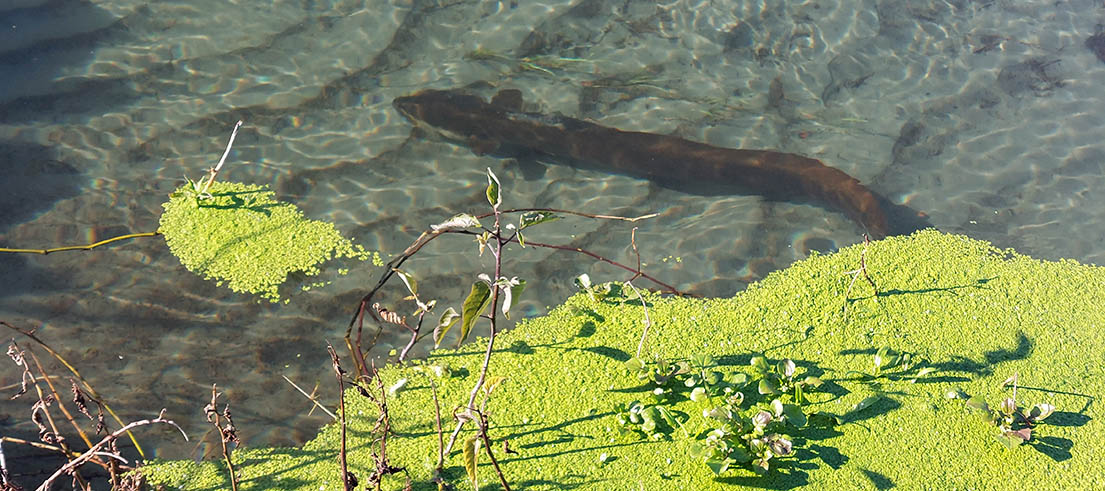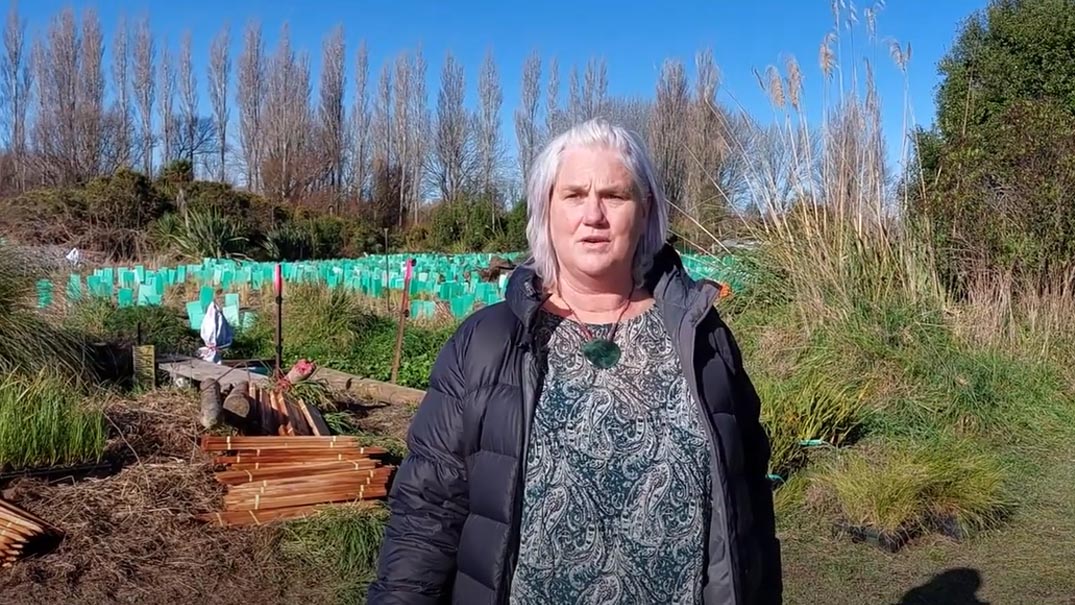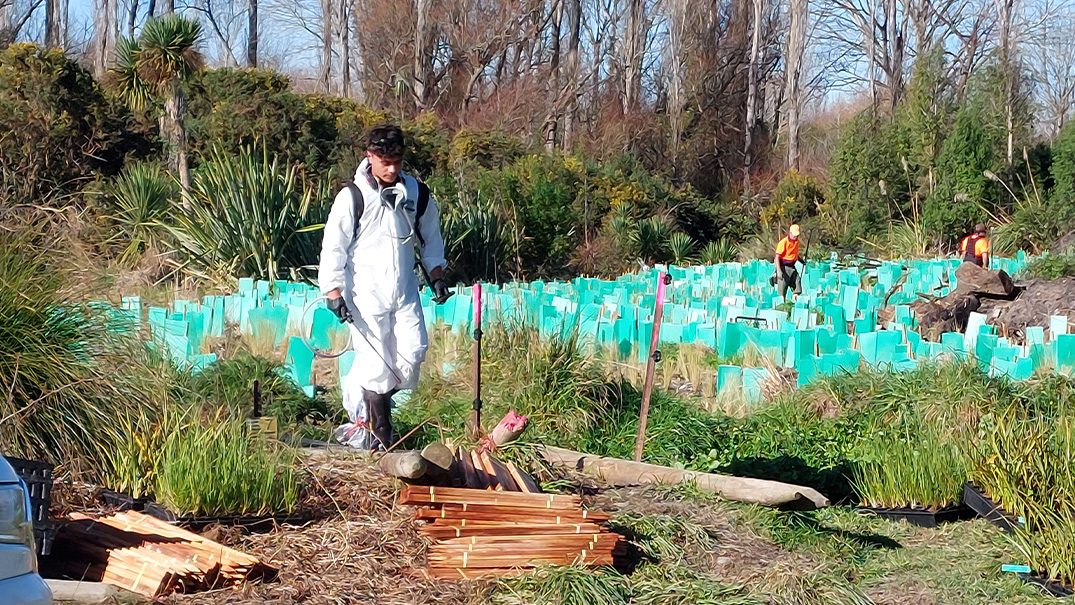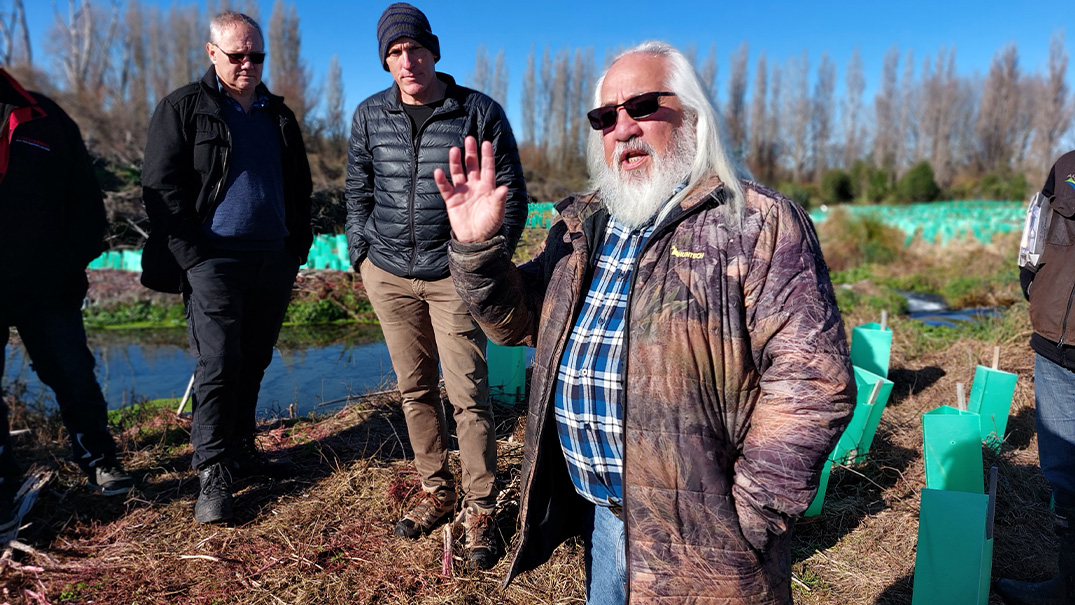
Zone committees get stream-side to learn about Rangitata Revival
The Ashburton and Ōrāri Temuka Ōpihi Pareora (OTOP) zone committees recently enjoyed a field trip to a restoration site along McKinnon's Creek/Ōtakitane.
The location - a spring-fed stream on the south side of the Rangitata/Rakitata River - is undergoing significant work by Te Kete Tipuranga O Huirapa (a division of Arowhenua Native Nursery), including thousands of plantings.
The project is part of Ko te whakahaumanu o te Rakitata awa, or Rangitata Revival, a programme that brings together Te Rūnanga o Arowhenua as mana whenua and kaitiaki of the Rangitata River/Rakitata, government agencies, and the community in partnership.
Gaining insight
The day began at Ealing Hall with a presentation about Rangitata Revival from some of the partners - Environment Canterbury, Arowhenua, and the Department of Conservation (DOC). It was an opportunity for the zone committee members to ask questions and learn about the programme.
After a quick bite to eat, the group headed to a nearby dairy farm that hosts Ōtakitane to see one of the six lower catchment sites undergoing restoration.
Brad Edwards, DOC river restoration ranger and member of Rangitata Revival, provided some background information about the area and outlined some of the key work to date.
Establishing native vegetation
The restoration efforts are impressive - notably, the 17,000 locally-sourced native plants that were put in the ground over a two-week period, thanks to the incredible mahi of a small team from Te Kete Tipuranga O Huirapa.
The plants include tī kōuka/cabbage tree, harakeke/New Zealand flax, and various grasses, all selected to be resilient to any flooding and act as a 'stepping-stone' for native birds and insects to travel up and down the river corridor.
Brad explained that spring-fed systems are rare in the Rakitata, but they’re very important for juvenile wildlife - particularly fish and insects, including the threatened kanakana/lamprey.
"We're trying to tip the environment in their favour by getting native vegetation established. These plants will also support the water quality by doing a lot of filtering and picking up sediment that's being carried into the waterways."
Knowledge gathering
Bill Thomas, Ashburton Water Zone Committee chair, said the field trip was a chance for committee members to see collaboration in action and think about ways this type of work could be replicated across communities.
"It's been interesting seeing what can be done to enhance riverbeds and wetlands, and getting an idea of how that knowledge can be used by farming groups."
OTOP Water Zone Committee chair Glen Smith agreed.
"Today has provided some reassurance that action does happen - that it isn't just all talk. Seeing the work on the ground and the difference that can make, it's reassuring and will invigorate us to do more."
Ko te whakahaumanu o te Rakitata awa/Rangitata Revival Programme
The programme has the vision to value, protect and restore the mauri of the Rakitata ki uta ki tai, from source to sea, together.
Mauri is an essential element of the spiritual relationship of Ngāi Tahu with the river, embodying the physical and spiritual elements that make up the life force of all things. All elements of the natural environment possess a life force, and all forms of life are connected. All rivers carry their own mauri and have their own mana or status.
Ki uta ki tai is a philosophy that reflects the Ngāi Tahu view of environmental and resource management. It is a traditional concept encompassing kaitiakitanga/guardianship from the mountains and great inland lakes, down the rivers to hāpua/lagoons, wahapū/estuaries and to the sea. Ki uta ki tai encapsulates the interconnectedness of the whole environment and the need for an integrated approach in managing the awa.
The programme brings together Te Rūnanga o Arowhenua as mana whenua and kaitiaki of the Rakitata, government agencies and the community in partnership.
If you're interested in staying up to date with the latest news from the Rangitata Revival Programme, sign up to the email newsletter.



